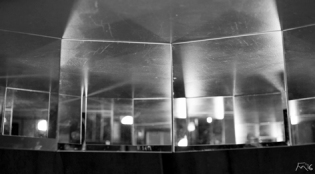
What Zen Seeing is Like
De: lamiradareflejada
Categoría: Uncategorized
| Apertura: | f/2.5 |
|---|---|
| Distancia focal: | 35 mm |
| ISO: | 400 |
| Obturación: | 1/0 segundos |
| Cámara: | NIKON D200 |

Nagatomo, Shigenori (in «Japanese Zen Buddhist Philosophy», The Stanford Encyclopedia of Philosophy (Spring 2016 Edition), Edward N. Zalta (ed.), URL = <http://plato.stanford.edu/archives/spr2016/entries/japanese-zen/>.) give us the following account through a dialog between master and disciple as related by Yanagita, Seizan (in Mu no tankyū; Chūgoku zenbukkyō [Inquiry into Nothing: Chinese Zen Buddhism], 1974, Tokyo: Kadokawa shoten.(pp: 132–3.)
“In order to give a still more concrete sense of what Zen seeing is like, we now return to the question of how Zen understands the experiential meaning of ”seeing into one’s nature.“ Zen’s contention is that the bottomless ground is that which non-dualistically ”sees“ when the practitioner experiences the state of nothing, (or no-thought and no-image). How then does Zen articulate this ”seeing“? This question points to an examination of the epistemic structure of how knowledge operates in Zen experience. For this purpose, the following Zen dialogue between Jinne and Chōsetsu concerning ”no-thought“ is illuminating. Although it is lengthy, I will quote it in full in order to provide a sense of how a Zen dialogue unfolds:
The disciple asks: What then is it [i.e., no-thought]?
The master replies: It is nothing like ”what is.“ Therefore, we can not explain ”no- thought.“ The reason why I am speaking about it now is because you have asked about it. If you haven’t asked about it, there is no need to explain it. Suppose that there is a clear, transparent mirror. If it does not face a thing, no image is reflected in it. To say that it mirrors an image means that because it faces something, it just mirrors its image.
The disciple asks: If it does not face any thing, is there or is there not a reflection in the mirror?
The master replies: That the mirror reflects a thing means that it always mirrors regardless of whether it is facing or not facing a thing.
The disciple asks: If there is no image and since you do not give an explanation, how can all beings and nonbeings become an issue? Now when you say that it always mirrors, how does it mirror?
The master replies: When I say that the mirror always mirrors, it is because a clear, transparent mirror possesses an original nature as its essential activity of always mirroring things. Analogously, people’s mind is originally undefiled, and naturally possesses a superb light of wisdom that illuminates the perfect world of nirvāna.
The disciple asks: Insofar as people’s minds are originally like that, when do people get it?
The master replies: It just sees nothing.
The disciple asks: When it is nothing, what can it see?
The master replies: Seeing is not like something you can call a thing.
The disciple asks: If it is not like anything one can call a thing, what does it see?
The master replies: it sees nothing. That is the true seeing. It always sees.”
